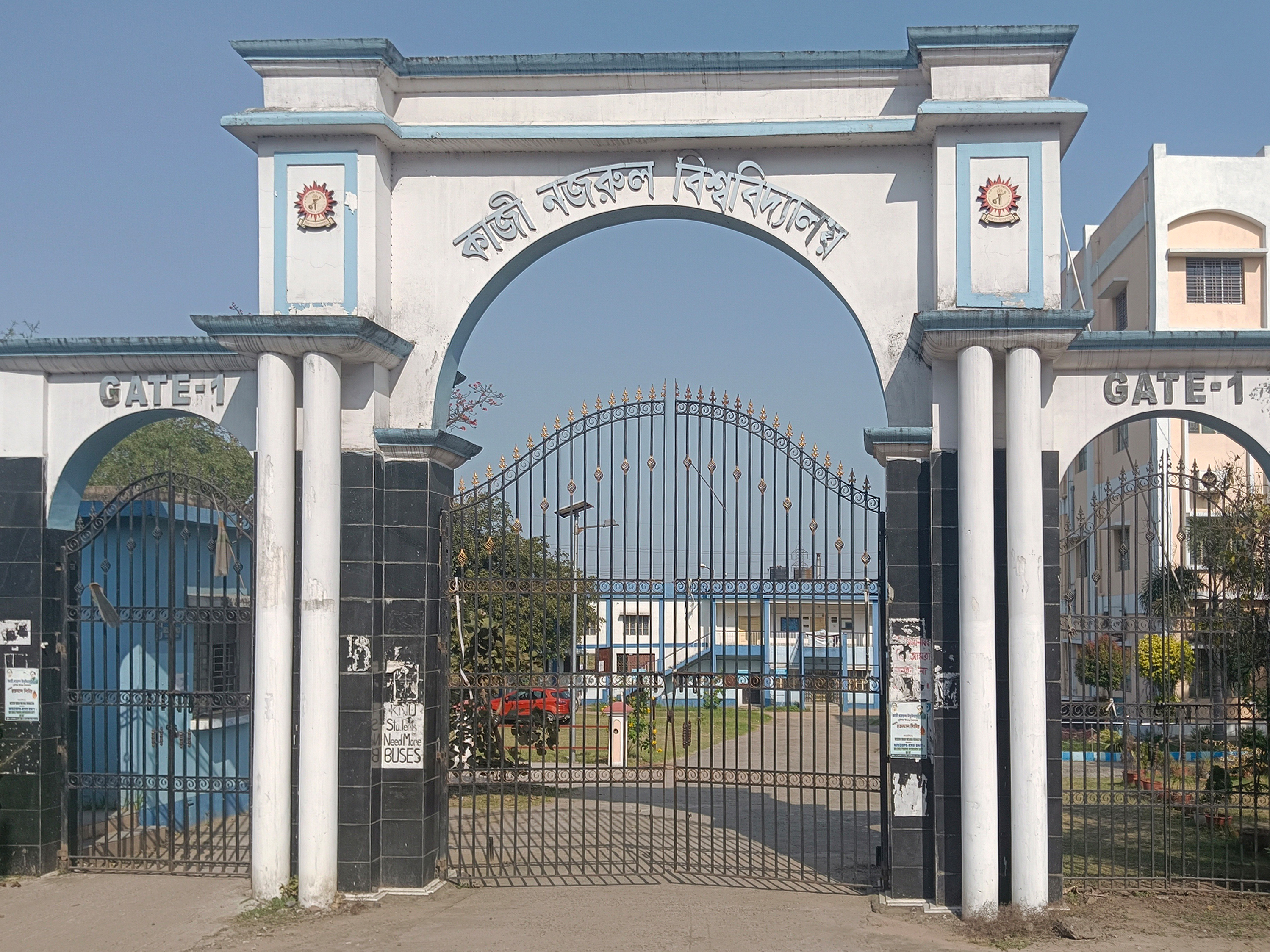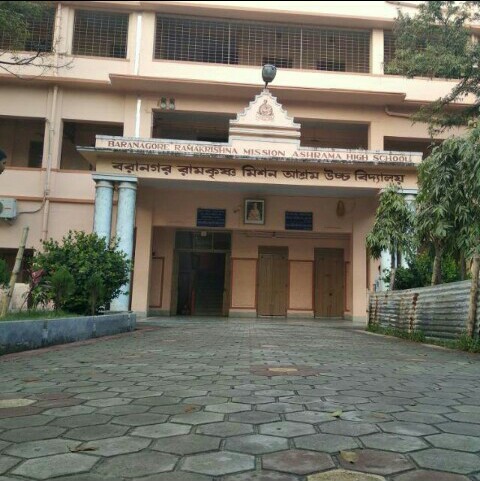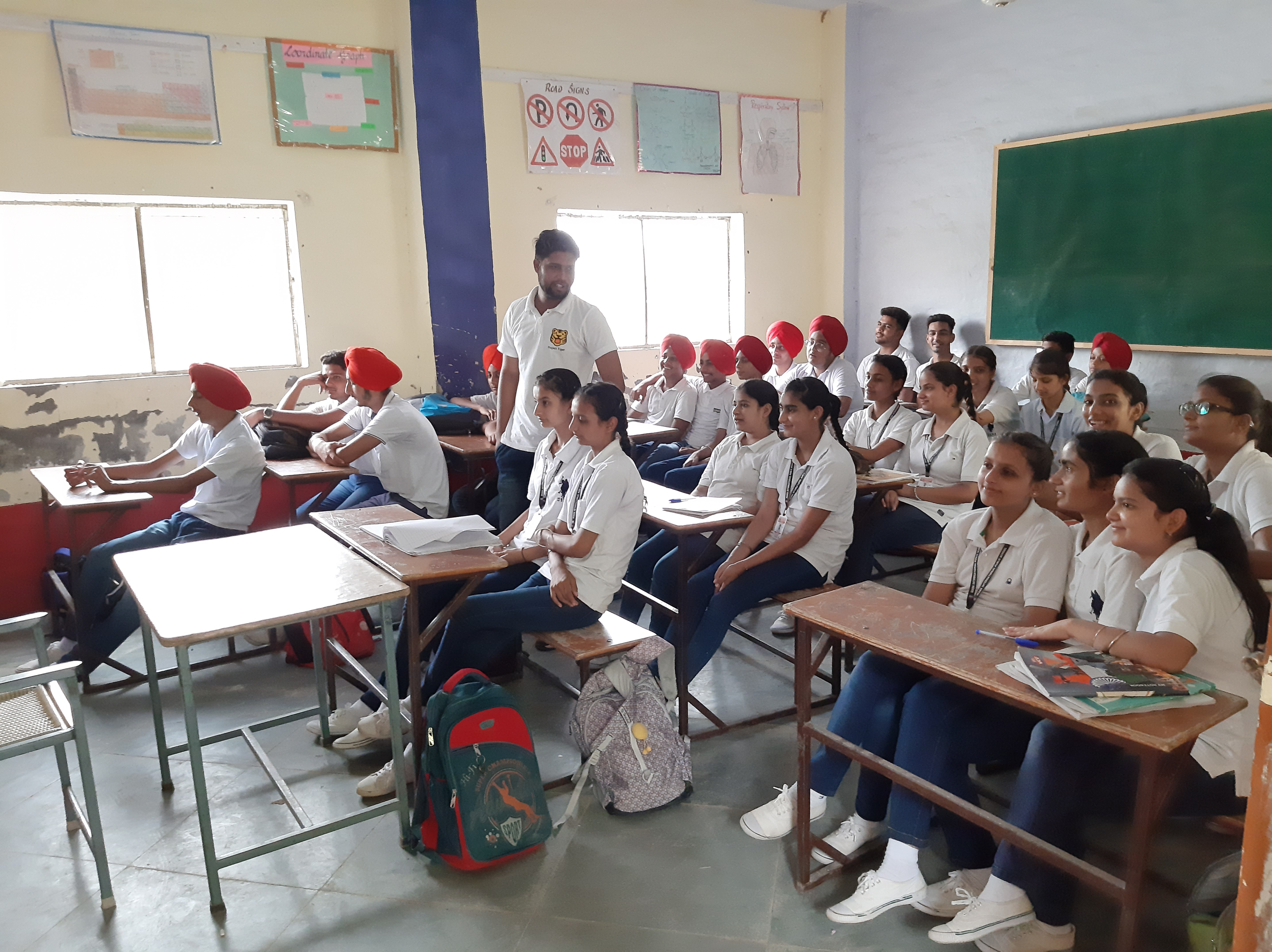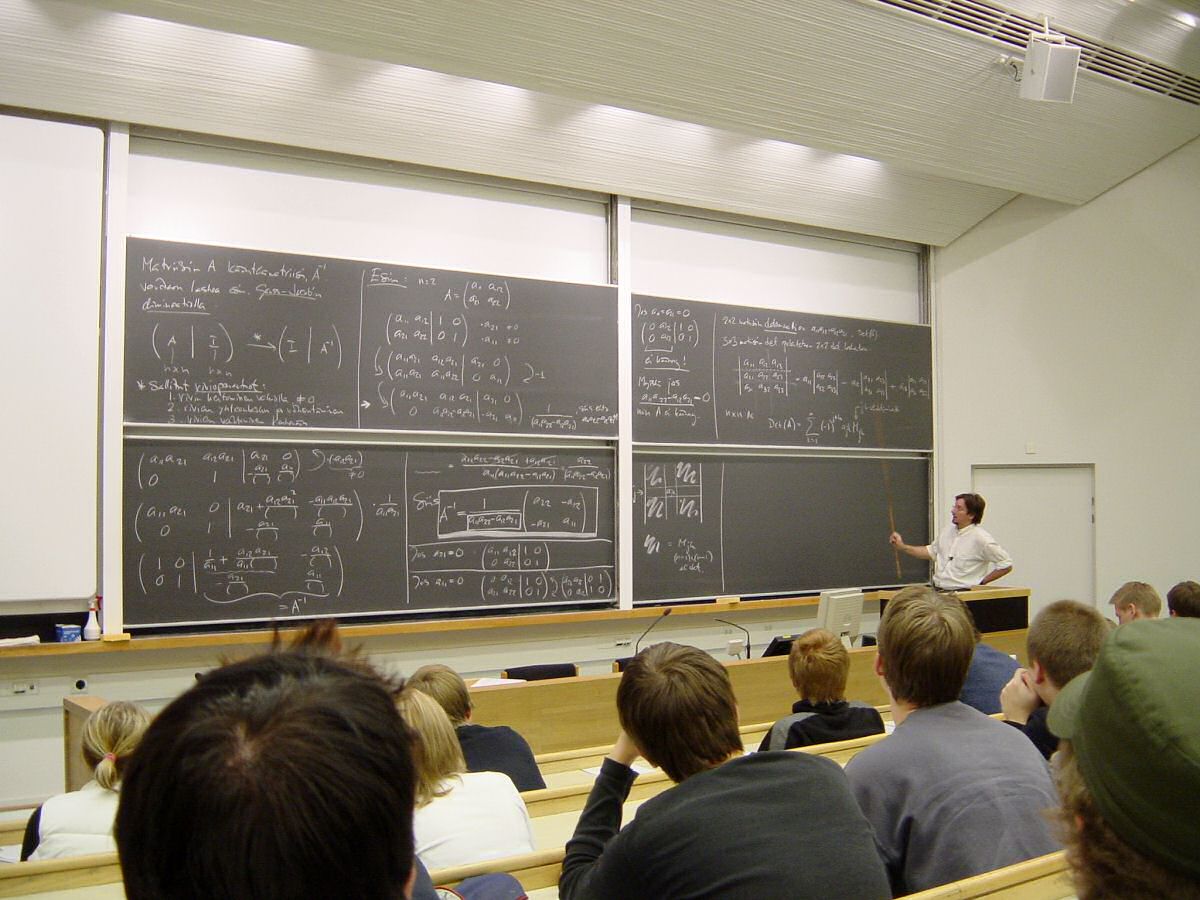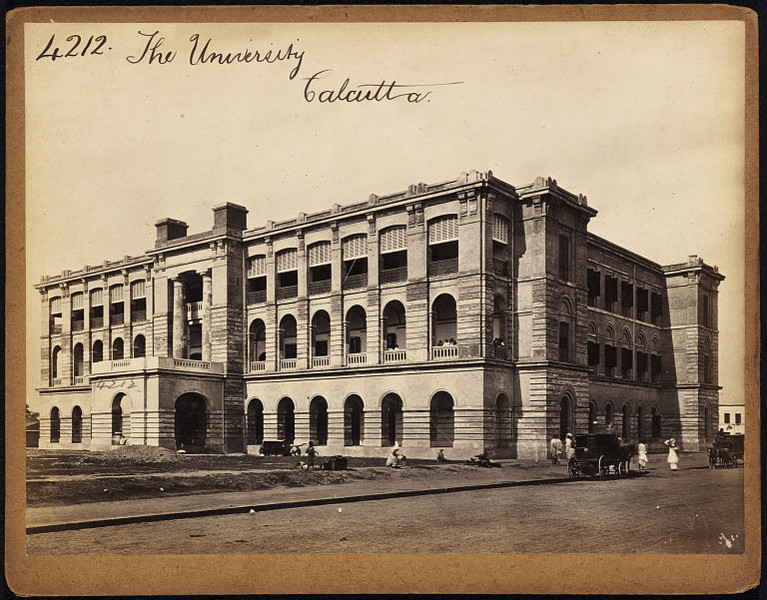|
Triveni Devi Bhalotia College
Trivenidevi Bhalotia College, also known as Raniganj TDB College, is a co-educational institution and has the morning and day sections, established in 1957, is a college at Raniganj, in Asansol, Paschim Bardhaman district, West Bengal, India. It is situated in a central location of Raniganj between NH-2 and Eastern Railway. It offers undergraduate courses in arts, commerce and sciences and post graduate courses. It is the second biggest college in West Bengal with respect to higher education with 37 honours subjects and 7 postgraduate subjects. In 2007, the college celebrated its Golden Jubilee. Affiliation and accreditation Triveni Devi Bhalotia College (TDB College) initiated its journey from 1957 as an affiliated college under the University of Calcutta. From 1960, it is affiliated to The University of Burdwan and from 24 June 2015, it is affiliated to Kazi Nazrul University, Asansol Asansol is a city in the Indian state of West Bengal. It is the second largest ci ... [...More Info...] [...Related Items...] OR: [Wikipedia] [Google] [Baidu] |
Kazi Nazrul University
Kazi Nazrul University (KNU) is a public state research university located in Asansol, West Bengal, India. Chief Minister Mamata Banerjee laid the foundation stone on 10 January 2013. The university has been named after the Bengali poet Kazi Nazrul Islam. The university was established under the Kazi Nazrul University Act, 2012. Anuradha Mukherjee was appointed as the first vice-chancellor of the university. In 2018 in a special convocation the university honored Ex Prime Minister of Bangladesh Sheikh Hasina with honorary Doctorate of Literature. Organisation and administration Governance In June 2023 Governor of West Bengal, as chancellor of universities, appointed Debashis Bandyopadhyay new interim vice chancellor of the university. Jurisdiction The university is an affiliating institution and has jurisdiction over the colleges of the Paschim Bardhaman district. Faculties Kazi Nazrul University has 19 departments organized into four faculty councils. Scho ... [...More Info...] [...Related Items...] OR: [Wikipedia] [Google] [Baidu] |
University Grants Commission (India)
University Grants Commission (UGC; ISO: ''Viśvavidyālaya Anudāna Āyōga'') is a statutory body under Department of Higher Education, Ministry of Education, Government of India. It was set up in accordance to the UGC Act 1956 and is charged with coordination, determination and maintenance of standards of higher education in India. It provides recognition to universities in India, and disbursements of funds to such recognized universities and colleges. The UGC headquarters are in New Delhi, and it has six regional centres in Pune, Bhopal, Kolkata, Hyderabad, Guwahati and Bengaluru. A proposal to replace it with another new regulatory body called HECI is under consideration by the Government of India. The UGC provides doctoral scholarships to all those who clear JRF in the National Eligibility Test. On an average, each year is spent on doctoral and post-doctoral fellowships by the commission. History The UGC was first formed in 1945 to oversee the work of the th ... [...More Info...] [...Related Items...] OR: [Wikipedia] [Google] [Baidu] |
Education In Asansol
Education is the transmission of knowledge and skills and the development of character traits. Formal education occurs within a structured institutional framework, such as public schools, following a curriculum. Non-formal education also follows a structured approach but occurs outside the formal schooling system, while informal education involves unstructured learning through daily experiences. Formal and non-formal education are categorized into levels, including early childhood education, primary education, secondary education, and tertiary education. Other classifications focus on teaching methods, such as teacher-centered and student-centered education, and on subjects, such as science education, language education, and physical education. Additionally, the term "education" can denote the mental states and qualities of educated individuals and the academic field studying educational phenomena. The precise definition of education is disputed, and there are disagreements ... [...More Info...] [...Related Items...] OR: [Wikipedia] [Google] [Baidu] |
Colleges Affiliated To Kazi Nazrul University
A college (Latin: ''collegium'') may be a tertiary educational institution (sometimes awarding degrees), part of a collegiate university, an institution offering vocational education, a further education institution, or a secondary school. In most of the world, a college may be a high school or secondary school, a college of further education, a training institution that awards trade qualifications, a higher-education provider that does not have university status (often without its own degree-awarding powers), or a constituent part of a university. In the United States, a college may offer undergraduate programs – either as an independent institution or as the undergraduate program of a university – or it may be a residential college of a university or a community college, referring to (primarily public) higher education institutions that aim to provide affordable and accessible education, usually limited to two-year associate degrees. The word "college" is generally ... [...More Info...] [...Related Items...] OR: [Wikipedia] [Google] [Baidu] |
Universities And Colleges In Paschim Bardhaman District
A university () is an institution of tertiary education and research which awards academic degrees in several academic disciplines. ''University'' is derived from the Latin phrase , which roughly means "community of teachers and scholars". Universities typically offer both undergraduate and postgraduate programs. The first universities in Europe were established by Catholic monks. The University of Bologna (), Italy, which was founded in 1088, is the first university in the sense of: *being a high degree-awarding institute. *using the word (which was coined at its foundation). *having independence from the ecclesiastic schools and issuing secular as well as non-secular degrees (with teaching conducted by both clergy and non-clergy): grammar, rhetoric, logic, theology, canon law and notarial law.Hunt Janin: "The university in medieval life, 1179–1499", McFarland, 2008, , p. 55f.de Ridder-Symoens, Hilde''A History of the University in Europe: Volume 1, Universities in the Midd ... [...More Info...] [...Related Items...] OR: [Wikipedia] [Google] [Baidu] |
Education In West Bengal
Education in West Bengal is provided by both the public sector as well as the private sector. Health Sciences, University of North Bengal and University of Calcutta. History Kolkata has played a pioneering role in the development of the modern education system in India. Western models of education came to India through Kolkata. Many of the first schools and colleges were established by the missionaries and reformists. Sir William Jones (philologist) established the Asiatic Society in 1784 for promoting oriental studies. People like Ram Mohan Roy, David Hare, Ishwar Chandra Vidyasagar, Shashi Bhusan Chatterjee, Maharshi Nagendranath - Bhaduri Mahasaya and William Carey played a leading role in the setting up of modern schools and colleges in the city. The Fort William College was established in 1800. The Hindu College was established in 1817. In 1855, the Hindu College, Calcutta was renamed as the Presidency College. William Carey established the Serampore College in S ... [...More Info...] [...Related Items...] OR: [Wikipedia] [Google] [Baidu] |
Education In India
Education in India is primarily managed by the state-run public education system, which falls under the command of the government at three levels: Government of India, central, States and Territories of India, state and Local government in India, local. Under various articles of the Indian Constitution and the Right of Children to Free and Compulsory Education Act, 2009, free and compulsory education is provided as a Fundamental Rights, Directive Principles and Fundamental Duties of India#Fundamental Rights, fundamental right to Children and adolescents in India, children aged 6 to 14. The approximate ratio of the total number of public schools to private schools in India is 10:3. Education in India covers different levels and types of learning, such as early childhood education, primary education, secondary education, higher education, and vocational education. It varies significantly according to Caste#Caste and higher education, different factors, such as location (urban o ... [...More Info...] [...Related Items...] OR: [Wikipedia] [Google] [Baidu] |
List Of Institutions Of Higher Education In West Bengal
Tertiary education (higher education, or post-secondary education) is the educational level following the completion of secondary education. The World Bank defines tertiary education as including universities, colleges, and vocational schools. ''Higher education'' is taken to include undergraduate and postgraduate education, while vocational education beyond secondary education is known as ''further education'' in the United Kingdom, or included under the category of ''continuing education'' in the United States. Tertiary education generally culminates in the receipt of certificates, diplomas, or academic degrees. Higher education represents levels 5, 6, 7, and 8 of the 2011 version of the International Standard Classification of Education structure. Tertiary education at a nondegree level is sometimes referred to as further education or continuing education as distinct from higher education. UNESCO stated that tertiary education focuses on learning endeavors in specialize ... [...More Info...] [...Related Items...] OR: [Wikipedia] [Google] [Baidu] |
The University Of Burdwan
The University of Burdwan (also known as Burdwan University or B. U.) is a Public university, public State university (India), state university located in Purba Bardhaman, West Bengal, India. It was established by the West Bengal Government as a teaching and affiliating university on 15 June 1960 with six postgraduate departments and 30 undergraduate colleges spread over three districts that come under the jurisdiction of the university. The university currently offers more than 30 undergraduate and 66 postgraduate courses. It has grown as the second largest state university in West Bengal after University of Calcutta. Over the years, the University has consistently performed in the NIRF ranking by securing rank within top 100 under ‘University’ Category and occupied the rank of 89, 92, 85 and 87 in the years 2019, 2020, 2021 and 2022 respectively. History The University of Burdwan was established on 15th June 1960, under the state university category of Government of West ... [...More Info...] [...Related Items...] OR: [Wikipedia] [Google] [Baidu] |
National Assessment And Accreditation Council
The National Assessment and Accreditation Council (NAAC) is a public autonomous body of the government of India that assesses and accredits higher education institutions (HEIs) in India. It is funded by the University Grants Commission and headquartered in Bengaluru Bengaluru, also known as Bangalore (List of renamed places in India#Karnataka, its official name until 1 November 2014), is the Capital city, capital and largest city of the southern States and union territories of India, Indian state of Kar .... History NAAC was established in 1994 in response to recommendations of National Policy on Education (1986). This policy was to "address the issues of deterioration in quality of education", and the Programme of Action (POA-1992) laid out strategic plans for the policies including the establishment of an independent national accreditation body. Consequently, the NAAC was established in 1994 with its headquarters at Bengaluru. Grading The NAAC assesses institutes on ... [...More Info...] [...Related Items...] OR: [Wikipedia] [Google] [Baidu] |
University Of Calcutta
The University of Calcutta, informally known as Calcutta University (), is a Public university, public State university (India), state university located in Kolkata, Calcutta (Kolkata), West Bengal, India. It has 151 affiliated undergraduate colleges and 16 institutes in Kolkata and nearby areas. It was established on 24 January 1857 and is the oldest multidisciplinary university of Indian Subcontinent and Southeast Asian Region. Today, the university's jurisdiction is limited to a few districts of West Bengal, but at the time of its establishment it had a catchment area ranging from Kabul to Myanmar. It is accredited as an "A" grade university by the National Assessment and Accreditation Council (NAAC). The university has a total of fourteen campuses spread over the city of Kolkata and its suburbs. As of 2020, 151 colleges and 21 institutes and centres are affiliated with CU. The university was fourth in the Indian University Ranking 2021 list, released by the National Institu ... [...More Info...] [...Related Items...] OR: [Wikipedia] [Google] [Baidu] |
Paschim Bardhaman District
Paschim Bardhaman district is a predominantly urban mining-industrial district in West Bengal. The headquarter of the district is Asansol. It was formed on 7 April 2017 after bifurcation of the erstwhile Bardhaman district as the 23rd district of West Bengal. Etymology Some historians link the name of the district to the 24th and last Jain ''tirthankara'', Mahavira Vardhamana, who came to preach in the area. Alternatively, ''Bardhamana'' means a prosperous and growing area. It was a forward frontier zone in the progress of Aryanisation by the people in the Upper Gangetic valley. ''Paschim'' means west. HistoryMicroliths found at Birbhanpur, near Durgapur, indicate settlements in the Ajay valley in the Paleolithic/ Mesolithic age, around 5,000 BC. In early historical times Bardhamanbhukti, a part of the Rarh region, was ruled successively by the Magadhas, Mauryas, Kushanas and Guptas. In the 7th century AD, when Shashanka was king, the area was part of the Gauda King ... [...More Info...] [...Related Items...] OR: [Wikipedia] [Google] [Baidu] |
